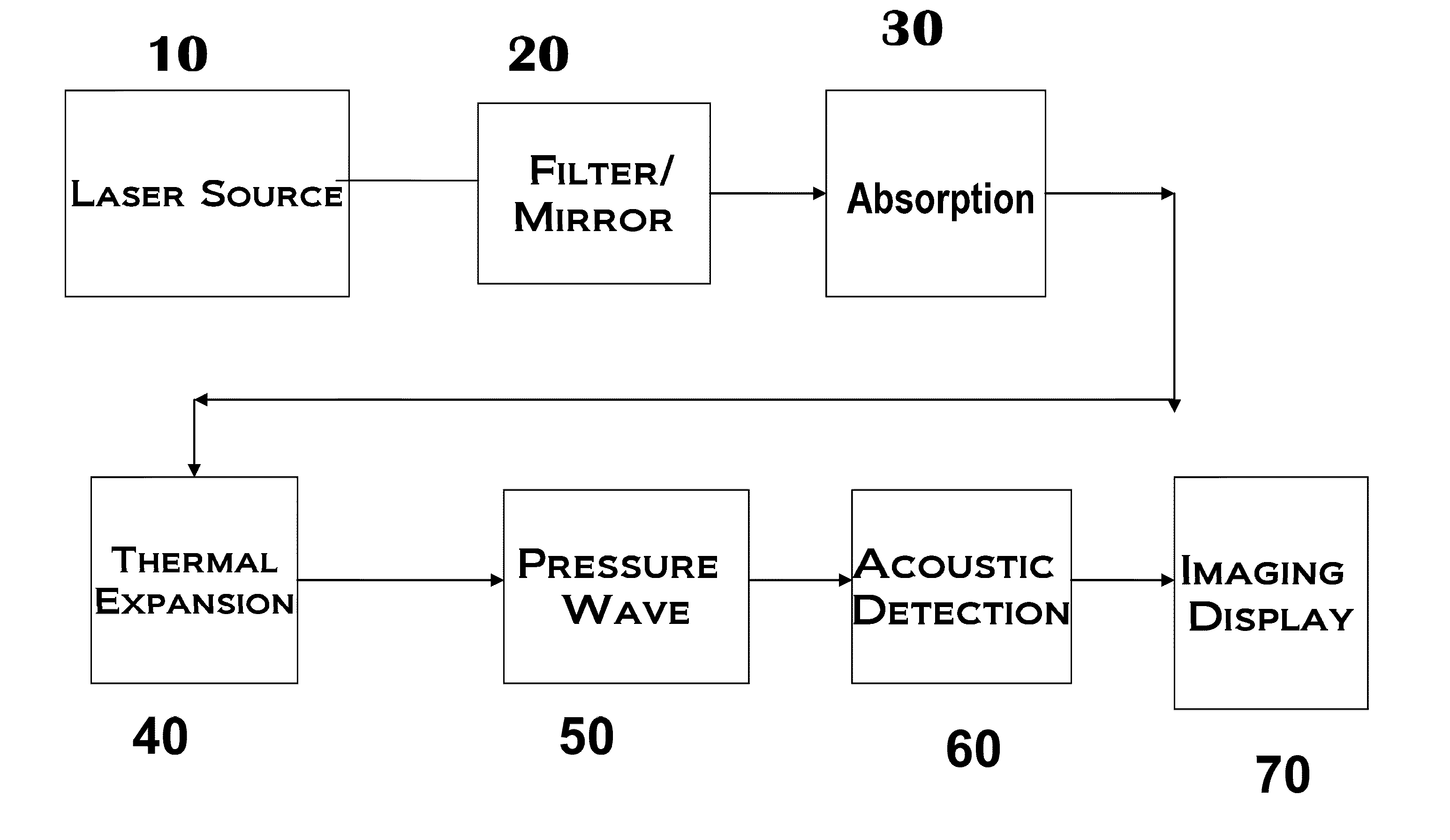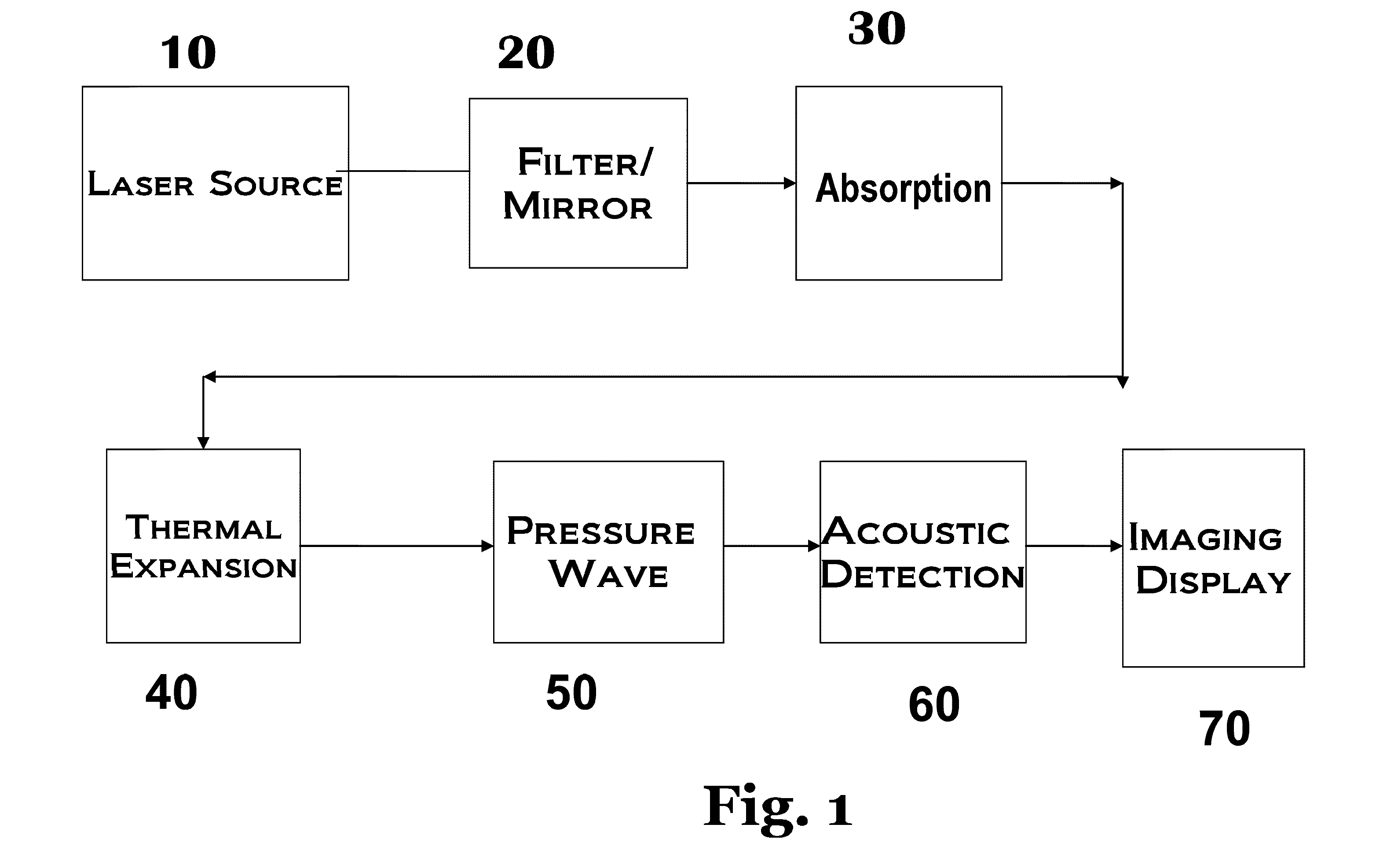Wearable photoacoustic vascular imaging system
a vascular imaging and wearable technology, applied in the field of vascular imaging and detection, can solve the problems of inability to clearly identify prone to guesswork in needle insertion, and inability to accurately measure the location of veins,
- Summary
- Abstract
- Description
- Claims
- Application Information
AI Technical Summary
Benefits of technology
Problems solved by technology
Method used
Image
Examples
Embodiment Construction
[0019]FIG. 1 shows the schematics of the general principle of the invention. Excitation light or laser pulses in the visible or NIR optical wavelengths are generated from any semiconductor laser source 10. The wavelengths are such as are transparent to body tissue, typically 600 to 1300 nm. The signals are transmitted through the optical fiber line 15 to the tissue where absorption takes place, 20. The large variation in the optical absorption and scattering of the various tissues, particularly hemoglobin is exploited to provide a broad optical contrast and heating differential 30. The differential in heating coupled with a differential in coefficient of expansion of the adjoining tissues result in a variation in the thermal expansion of the tissues, 40. The pulsed irradiation generates periodic expansion and contraction of the irradiated tissue in sympathy with the frequency of the irradiation and contrasting components of the irradiated tissue. If the temperature rises in any port...
PUM
 Login to View More
Login to View More Abstract
Description
Claims
Application Information
 Login to View More
Login to View More - R&D
- Intellectual Property
- Life Sciences
- Materials
- Tech Scout
- Unparalleled Data Quality
- Higher Quality Content
- 60% Fewer Hallucinations
Browse by: Latest US Patents, China's latest patents, Technical Efficacy Thesaurus, Application Domain, Technology Topic, Popular Technical Reports.
© 2025 PatSnap. All rights reserved.Legal|Privacy policy|Modern Slavery Act Transparency Statement|Sitemap|About US| Contact US: help@patsnap.com



